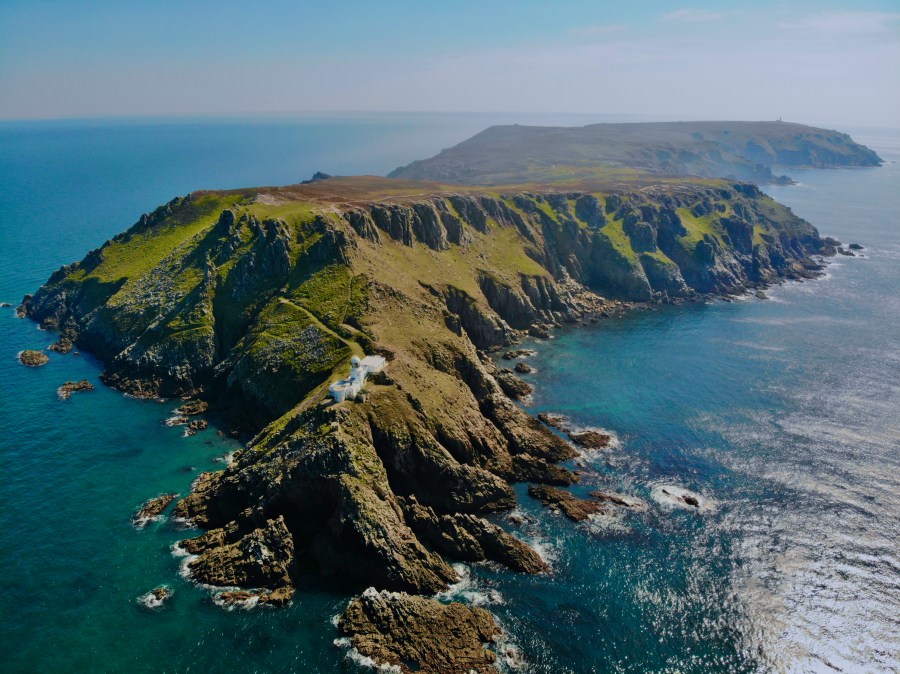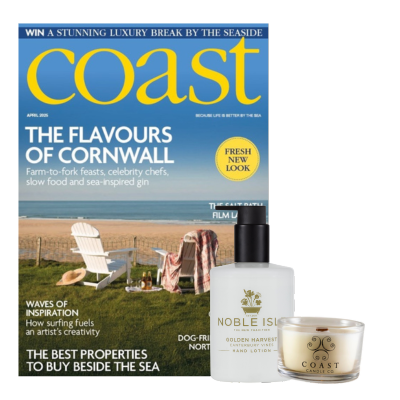You don’t have to venture far from home to enjoy a spot of island hopping. CHRISSY HARRIS explores places to visit off the coast of the UK and Ireland, visiting a selection of gorgeous British islands.
Tory (Toraigh) Island, Donegal
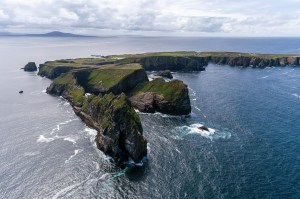
Just seven miles off the coast of Donegal, this is one of the most remote British islands, and of Ireland’s inhabited islands and is home to 141 residents. Gaelic heritage is beautifully preserved here, despite a few visits from the Vikings in the 9th Century. Toraigh is famous for its music, dance and school of painters. Gailearaí Dixon exhibits the work of island artists.
THINGS TO DO: Explore the historical sites, including a round tower that once protected monks from Viking raids.
And take a deep dive. The marine landscape is incredible here.
Isles of Scilly, Cornwall
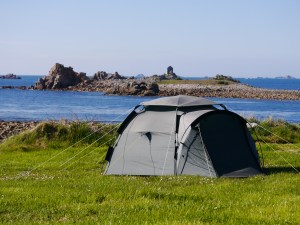
Up to 140 British islands (five inhabited) make up the Isles of Scilly. Fly or sail away from the crowds in Cornwall to enjoy this unspoilt haven that seems to send people, well, silly. Everyone who visits here seems to fall in love with the place, the people, the wildlife and the general laid-back vibe.
THINGS TO DO: Gaze at some the darkest and clearest skies in the UK in the community observatory on St Martin’s.
Camp, eat ice cream and watch the sunsets from Troytown Dairy Farm on St Agnes.
Lundy Island, Devon
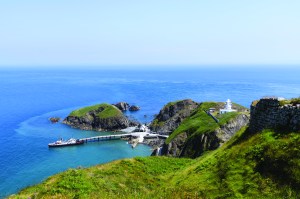
It’s three-miles long and half-a-mile wide but this granite outcrop off the coast of north Devon sure packs a lot in, especially for birdwatchers. The unique coastline supports the largest single seabird colony in all of the British islands and southern England. During the breeding season, up to 35 species nest here, including puffins.
THINGS TO DO: Find the elusive ‘Lundy bunny’. There are some 27 ‘letterboxes’ containing stamps hidden across the island. The bunny is a tough one to find, apparently.
Warden-led snorkel safaris allow visitors to see a world beneath the waves with an experienced guide.
Isle of Wight, Hampshire

The ‘star of the Solent’ of British islands is England’s largest island and a great year-round destination for all the family (unless you’re a grey squirrel. It’s illegal for them to visit because the area is home to their protected red squirrel cousins).
The Isle of Wight has had some famous fans, including Queen Victoria, Charles Darwin and Alfred Lord Tennyson who loved holidaying here, although presumably not together.
THINGS TO DO: Thrillseekers of all ages will love Blackgang Chine, the UK’s oldest theme park. It first opened in 1843.
Try a crab pasty. Yep, it’s a thing. The Crab Shed’s famous crab and mackerel pasties are the stuff of local legend.
The Channel Islands
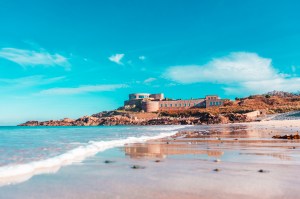
If you’re a British islands fan, then you could just make every vacation a trip to this collection of wonderful islands between the UK and French coasts and your fascination would be satisfied.
The main islands of Guernsey and Jersey are rich in maritime heritage, fascinating history and offer a fabulous range of places to eat and drink in style. And you can use them as the base to island hop to some of the more intriguing archipelagos dotted all around.
THINGS TO DO: Make for Alderney, a beautiful, wildlife-rich paradise with golden beaches and fascinating Second World War bunkers dotted everywhere. Or take a boat to Sark, a car-free throwback to another era, where going by bike is both energising and fun.
Isle of Man
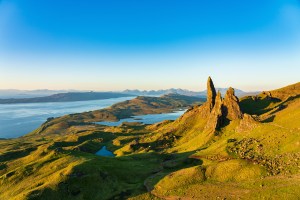
It’s not just for bikers. With more than 227 square miles of scenic landscapes, wildlife and folklore, the Isle of Man is the perfect getaway, just 30 minutes from the mainland.
Sure, the annual TT Races mean it’s full of motorbikes and motorsports fans for two weeks (May 27 to June 8 this year). But if you’re not into that, there are plenty of opportunities to make the most of the peace and quiet on this usually very tranquil island.
THINGS TO DO: Go to the glens. The steep leafy glens created by the island’s rivers are so cherished by the locals that 17 of them are owned and maintained by the government.
Make for the pretty west coast village of Peel, home of a £14m heritage centre, called the House of Manannan. The interactive museum guides you through the island’s rich Celtic, Viking and maritime past.
Orkney Islands
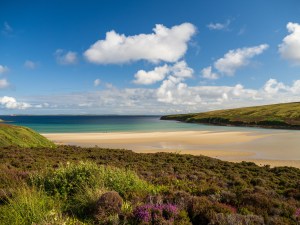
The weather is wild, times can be tough but oh boy, you’ve simply got to sample Orkney life. The sea, the gigantic sky, the wildflowers, the swallows doing their stunt-like flying. It’s magical. Orkney is an archipelago, a group of 70 islands (17 are inhabited). The islands encompass Neolithic sites, tall sandstone cliffs, seal colonies and more, plus there’s a lovely community waiting to welcome you.
THINGS TO DO: Take the Stromness Stroll. The three-hour guided walk will take you through the flagstone streets of the second-most populated town of the islands.
Go baa-rmy! The North Ronaldsay Sheep Festival (July 24-29) is an annual celebration of culture and conservation in Orkney’s most northerly community. The event aims to attract volunteers from across the globe to help with the annual task of maintaining and rebuilding the stone sheep dyke that encircles the island.
Fair Isle, Shetland
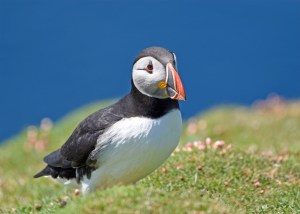
Get to Orkney, keep going and you’ll reach Fair Isle, a tiny grass-covered island that’s home to just 60 people. Owned by the National Trust for Scotland since 1954, this is the most geographically remote of the British islands, world famous for birdlife, traditional crafts (especially knitting) and stunning scenery.
THINGS TO DO: The George Waterston Memorial Centre and Museum is open on Monday, Wednesday and Friday in the summer, and at other times by arrangement.
Get crafty. Fair Isle is well-known for its knitwear. Several local knitters and craftspeople are happy to show visitors their work.
Lindisfarne or Holy Island, Northumberland
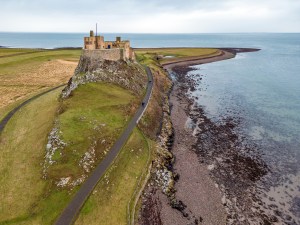
This small but perfectly formed tidal island of 160 people lies just off north-east coast, near Berwick-upon-Tweed. More than 650,000 visitors come from all over the world every year to experience the heritage and spirituality of this important centre of early Christianity. Lindisfarne was home to Cuthbert, the most important saint in northern England in the Middle Ages. It was also the scene of a devastating Viking attack on the church of St Cuthbert in 793.
THINGS TO DO: Visit the castle. A must-do when you’re in this part of the world. The inspiring 16th century building was redesigned by the famous Arts and Crafts architect Sir Edward Lutyens to become a holiday home for a wealthy Edwardian bachelor.
Listen to the sounds of the seals ‘singing’. You might be able to spot them swimming just offshore if you take a walk around the castle headland.
Rathlin Island, Co. Antrim
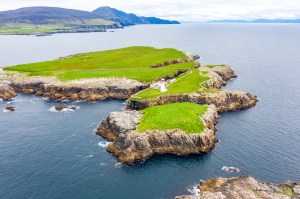
There’s nothing quite like stepping off the boat onto Rathlin in the summertime. Northern Ireland’s largest island boasts dramatic cliffs, secluded coves, and breath-taking views of the Causeway Coast. The birds love it, too. Thousands arrive every year to cliffs to breed, including puffins, fulmar, kittiwakes.
THINGS TO DO: There are eight outdoor trails to choose from. The 2.1km walking trail at the Craigmacagan nature reserve is a 15-minute walk from the harbour and a stunning place to explore.
Visit Rathlin’s West Lighthouse, one of the ‘great lighthouses of Ireland’.
The Pembrokeshire Islands
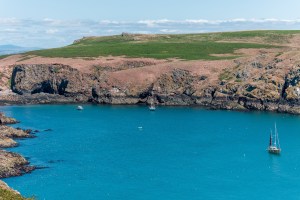
Skomer, Skokholm, and Grassholm are a trio of neighbouring British islands off the coast of west Wales. Skomer is the largest and is known for its puffin colony. Skokholm was a rabbit farm for more than 200 years and a place of significant archaeological exploration. Grassholm is one of only 23 gannet colonies in the UK and Ireland and is of national and international importance.
THINGS TO DO: Go cruising. The waters around Skomer and Skokholm are part of the Skomer Marine Conservation Zone, the first of its kind in Wales. Here you’re likely to see common porpoises and dolphins and also the strange but rather lovely sunfish.
Bed down. The farm complex in the centre of Skomer has been converted into accommodation, sleeping a total of 16 people in private rooms.
Mull and Iona
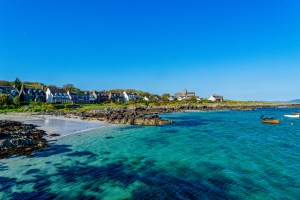
Visiting an island off the west coast of Scotland should be standard practice for busy city dwellers. Mull and Iona are full of magical landscapes, mountains, beaches and peaceful villages. Drink it all in, along with the whisky and a big dose of Hebridean hospitality.
THINGS TO DO: Take a tour and tasting experience at the Tobermory Distillery on the Isle of Mull, established in 1798 and one of the oldest commercial distilleries in Scotland.
Take a dip in the chilly but crystal-clear waters around Iona. St Ronan’s Bay is the nearest beach to the ferry. It has a white sandy seabed stretching out into the Sound of Iona.
Hayling Island, Hampshire
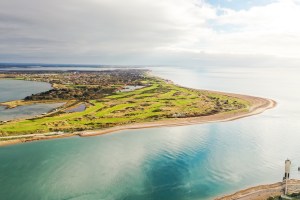
Hayling floats between the sheltered waters of Langstone Harbour to the west and Chichester Harbour to the east. There’s one road on and off, so it’s not an island in the purest sense but you can still get that splendid isolation feeling. There are more than three miles of beaches along the seafront for kitesurfing, sailing or just sitting back and watching everyone else be active.
THINGS TO DO: Tee off on a choice of golf courses, including a links course with views across the Solent, a golf centre with driving range or a seafront pitch and putt course.
Visit Hayling Island’s donkey sanctuary, home to unwanted and retired animals in need of a restful retreat. Booking essential.
Brownsea Island, Dorset
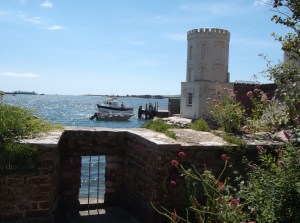
Famous for red squirrels, wildlife and, er Scouting. The Scouting and Guiding movement began life on the island off the Dorset coast in 1907 as an experimental camp. There is still a camp site there that be visited and booked with the National Trust, which manages Brownsea.
The island’s diverse habitats include heathland, woodland and a lagoon – internationally important for overwintering and summer-nesting birds. Brownsea also has a small population of peacocks.
THINGS TO DO: Take in a play. A key attraction of Brownsea is its open-air theatre, which has been putting on works of Shakespeare annually since 1964.
Kids can have fun at the red squirrel-inspired agility course, featuring balance beams, climbing frame, obstacles, seesaw and a den-building area.
The 10 best British islands to move to
Burgh Island, Devon
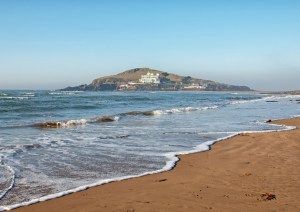
There’s a wonderful moment as you come over the brow of the hill at Bigbury-on-Sea in Devon when you catch sight of Burgh Island and its iconic hotel. This remarkable building, built in the Art Deco style in 1929 by filmmaker Archibald Nettlefold, quickly became known as ‘the best hotel west of the Ritz’, and has a reputation for decades of decadence.
It famously became Queen of Crime Agatha Christie’s bolthole and inspired the settings for two of her novels, And Then There Were None and Evil Under the Sun.
The Beatles, Winston Churchill and Noel Coward are just a few of the other famous names who have made the journey across the water to stay on Burgh Island.
THINGS TO DO: Ummm…buy it? The Burgh Island Hotel and its 21-acres are up for sale for offers in excess of £15 million.
Or else pop over to visit it via the famous sea tractor before enjoying a walk around the island.
Isle of Skye
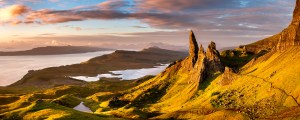
Skye is the largest of the Inner Hebrides and the second largest of Scotland’s islands. It’s connected to the mainland by a road bridge, making it easy to access and one of the most visited tourist destinations in Scotland (after Edinburgh).
Everything you’d want and expect is here – incredible scenery, traditional fishing villages and a rich history of clan warfare and Jacobite rebellions.
THINGS TO DO: Go Munro bagging, a popular pastime in Scotland where walkers challenge themselves to climb as many Munros (peaks) as they can. The Munros are named after Sir Hugh Munro, who produced the first compilation of such hills, known as Munro’s Tables, in 1891. Of the 283 Scottish Munros, 12 are in The Black Cuillin on Skye.
Head to Staffin Beach where you can see dinosaur footprints dating back 165 million years. Prehistoric history doesn’t get much better than this.
Foula, Shetland Islands
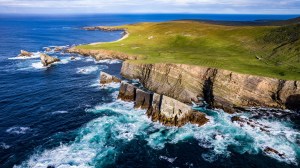
Just 200 or so miles from Norway, this scrap of land is as about as remote as you can get while still being part of the UK.
Foula is home to important colonies of seabirds, hundreds of hardy and colourful Foula sheep, Shetland ponies and just 35 full-time residents, who share and manage the running of the island.
Conditions are often tough, there are no shops (groceries come in by plane) but what a weather dependent adventure you could have if you visit.
THINGS TO DO: Get here, would be the first thing. There’s a two-hour 15 min ferry crossing from the West Mainland or regular flights by Airtask from Tingwall Airport, just outside Lerwick.
Book a guided walk with a member of the island’s Ranger Service, usually available on Wednesdays and Fridays.
Dursey Island, Co Cork
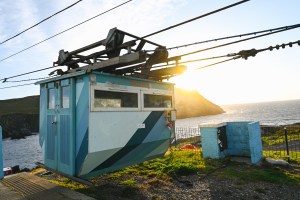
Board Europe’s only sea cable car to reach this small, remote island situated off the southwest coast of County Cork. The ten-minute journey, 250m above the sea, offers amazing views of Dursey’s Napoleonic Signal Tower and the Atlantic Ocean.
The island has a handful of semi-permanent residents but no shops, pubs or restaurants. Bring a picnic.
THINGS TO DO: Dursey is a walkers’ paradise and best explored by foot. You can do the Dursey Island Loop (about seven miles), which starts and finishes at Castletownbere. Just be sure to stay on the paths to protect the local fauna and birdlife.
It is possible to camp on the island. Visitors will need to speak to one of the local farmers for permission and advice on where to stay. See durseyisland.ie
St Michael’s Mount, Cornwall
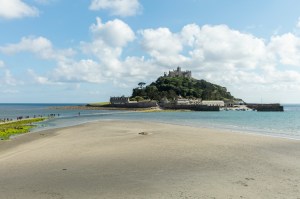
This tidal island off the coast of Cornwall has had a varied past. Originally a Benedictine monastery and place of pilgrimage, it was then a fortress and the legendary home of the Cornish giant Cormoran. Since around 1650, it’s been home to the St Aubyn family, as well as a small community. Today, you can access The Mount, which is managed by the National Trust, on foot across the causeway at low tide, or by short ferry crossing at high tide.
THINGS TO DO: Visit the gardens. The private terraced gardens on St Michael’s Mount are open to visitors from May until the end of August.
See the light. The castle is often floodlit on summer evenings. The lights, when reflected in a calm sea, makes it look as though the building is floating in the air.
Anglesey

This is a beautiful part of Wales, set a world apart from the mainland by the Menai Strait. There are two pretty spectacular ways on and off – the Britannia Bridge and the Menai Suspension Bridge. Lots of people come here for the sandy beaches and rocky coves, mountain views and summer sunsets. Most of Anglesey’s coastline has been officially designated an Area of Outstanding Natural Beauty (AONB).
THINGS TO DO: Get on your bike. There are some fantastic cycling trails on the island. The Copper Trail is a 36-mile circular route that takes in Llynnon Mill, Wales’ only working windmill.
Visit an island off an island. The South Stack Lighthouse is just off the coast of Anglesey. Visitors can go on a tour and climb to the top to watch the seabirds. Note – there are 400 steps on and off the island.
Isle of Lewis
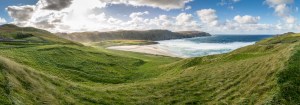
Lewis is the largest island of the Outer Hebrides and lives life on the edge of the Atlantic Ocean. It’s damp, windswept but full of thriving Gaelic culture and incredible wildlife. There are also many historic sites to explore, such as the 5,000-year-old Callanish Stones. The island is also connected to the Isle of Harris, so you can enjoy the best of both Hebridean worlds.
THINGS TO DO: Taste the true spirit of the islands at the Uig Abhainn Dearg Distillery – the only legal producer of scotch whisky on the island.
Beach hop between three corkers: Uig Sands (aka Ardoil Beach), Barry beach and Bosta Beach.

